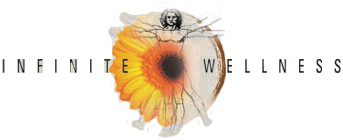
Nutrition and Diet – The Paleo Diet Plan
We know that diet has the ability to suppress or support immune function. Many of our health problems today are due to what we do and do not eat. It is very important that as part of your plan for health and wellness you take responsibility for what you are feeding your body. If your car wasn’t running well and it required unleaded gasoline I don’t think you would put regular gasoline in the tank.
As humans we require similar macro and micronutrients and all human groups have similar anatomical, physiological, and endocrine functions in regard to diet and nutrition. We all began as hunter-gatherers dependent on wild plants and animals—this is what shaped our present-day nutritional requirements. These basic Paleolithic principles are put together based on the Paleo Diet Plan written in the book “The Paleo Diet” by Dr. Loren Cordain. The following nutritional structure and principiles of diet ideally fit our genetic makeup.
Paleolithic Principle
Here are some general Paleolithic Principles of healthy eating in a nutshell as described by Robert Crayhon and Dr. Loren Cordain. These principles should be followed, and adapted based on the individual constitution, ancestry and food sensitivities or allergies tested for each individual.
- Eat high quality animal products, ideally wild game (elk, buffalo), organic, antibiotic and hormone-free, free-range meat (beef, chicken, turkey). Meat has been consumed by mankind throughout history and is health-promoting as long as it is from animals that are allowed to live in the wild and are fed a diet that reflects their natural eating patterns. Seafood is a wonderful choice but because of the mercury content found in many of the fish, being familiar with the levels of toxicity in them would be a good idea (toxicity level table at the bottom of this page).
- Eat a diet balanced in fat quality. We are not recommending a low fat diet. There must be a good balance of omega3, omega6, and saturated fats which benefit the body when eaten in the right ratio
- Foods should be eaten in their whole state. In other words, fruit are much better for you than fruit juice, nuts and seeds are much better for you than the oil from them. Although the addition of an omega supplement is almost always required in a nutritional protocol due to the lack or imbalance of omegas in our diet.
- Cook Foods Lightly. We are not recommending you eat a raw food diet. Meat should never be eaten raw, though our ancestors ate it this way. Meat should never be overcooked or blackened. Vegetables should be raw or steamed, never boiled.
- Grain and dairy are relatively new products to humanity and the human body. Most are intolerant to them and don’t even know it. These sensitivities have been known to cause health problems such as mineral deficiencies and inflammation in the gut. Some grain products eaten rarely–in moderation are acceptable, just not as the main part of a meal. Choosing Goat’s Milk, Almond Milk, Rice Milk, or Hazelnut Milk are wonderful substitutes for replacing cow dairy. These products can be found at the local Whole Foods Market, Wild Oats, or Vitamin Cottage.
- Large amounts of fats or carbohydrates should not be part of your diet. This was never done by the Stone Age Man. Diets that have high amounts of fat, as is the case with the traditional Eskimo diet, are also low in carbohydrates, while diets of equatorial peoples that are higher in carbohydrates are usually lower in fats. The combination of high-carbohydrate and high fat intake is very new to mankind and has potential for causing disease. It is not a diet available in the wild.
- Eat organic food as often as possible. Organic foods are those grown without pesticides, herbicides, or fungicides (these are carcinogenic properties and toxic to the nervous system).
- Eat foods grown locally and that reflect the seasonal changes of your surroundings. Eating according to the seasons allows you to rotate foods naturally and get more of a variety and more balanced nutrient intake. Varying food choices will also protect you from food allergies or sensitivities that come from eating the same foods throughout the entire year.
- Eat according to the needs of your ancestors. Hispanics for example may need to limit their intake of carbohydrates, particularly sugar and refined-grain products due to their being predisposed to diseases such as high insulin levels, type II Diabetes, and heart disease. These principles need to be modified based on the individual needs and those that our ancestry suggests.
The Problems with a Vegetarian Diet
One of the most damaging thing in healthcare today, says Robert Crayhon, is all the information that we would all be better off as vegetarians. And with that thought usually comes the idea that humans are somehow designed to be vegetarian which is a fallacy. Research suggests that as a hunter-gatherer population we got 56% of our calories from animal products and thrived. You can actually eat vegetarian and maintain a level of health, but you will be eating a diet that was not designed for you—you are an omnivore and limiting yourself to one part of the food spectrum limits your health. A healthy vegetarian diet is far better than the junk-food laden standard American diet. But still pales when compared to the health-promoting power of a diet based on the Paleolithic principles. Vegetarians benefit by getting half of the Paleolithic picture correct: by eating lots of vegetables, which are high in antioxidants, vitamin C and carotenoids, as well as avoiding junky meat products. The benefits never come by eating less meat, they come by eating more vegetables. In clinic and with testing many vegetarians, there seem to be the same type of deficiencies and struggles in their healthcare. Their diets are most of the time high in carbohydrates which causes many blood sugar issues and heart disease issues; their diets are void of richly needed amino acids such as carnitine, lysine, and omega-3 fatty acids EPA and DHA; B vitamins which are a much needed staple for every metabolic pathway of the body are always severely deficient and usually the main precursor for the health issues at hand; their diets have a low intake of selenium and trace minerals needed for immune function, thyroid health and cancer prevention.
There are many books available to help on daily food plans and even recipes. We recommend that you purchase one or more of the following to better help you get familiar with the options in meal planning and creating better health.
RECOMMENDED READING
“The Paleo Diet“
by Loren Cordain, Ph.D.
“The Paleolithic Prescription“
by S. Boyd Eaton, M.D., Marjorie Shostak, and Melvin Konner, M.D., Ph.D.
“Food Politics“
by Marion Nestle
“Excitotoxins – The Taste that Kills“
by Russell L. Blaylock, M.D.
Role of Nutrition in Health and Disesase
by We Cornatzer, Ph.D., M.D.
For Paleo Diet Recipes and Food Ideas
www.thepaleodiet.com
For current information on the destruction of food sources by genetic modification.
RESOURCES FOR CLEAN, HEALTHY, AFFORDABLE MEAT
(Paonia is a 4-hour drive from Denver—I usually go up and purchase 6 months worth of meat from Homestead Market and from The Living Farm. They have Elk, Buffalo, Beef, Pork, and Chicken—all free range. They box it on-site and the meat keeps itself completely frozen for the drive back. No need to take coolers or worry about ice for the boxes. A six-month supply of meat for 2 people usually runs about $600—great prices.)
Homestead Market
(Elk, Buffalo, Beef, Pork, Chicken, Fish)
101 Grand Avenue
Paonia, Colorado
970-527-5655
The Living Farm
Free Range Chicken and Eggs (no antibiotics/hormones/locally and free range grown)
Paonia, Colorado
970-527-3305
Seafood Landing
(Please see the chart on Seafood)
20th and Wadsworth
Lakewood, Colorado 80215
303-571-1995
